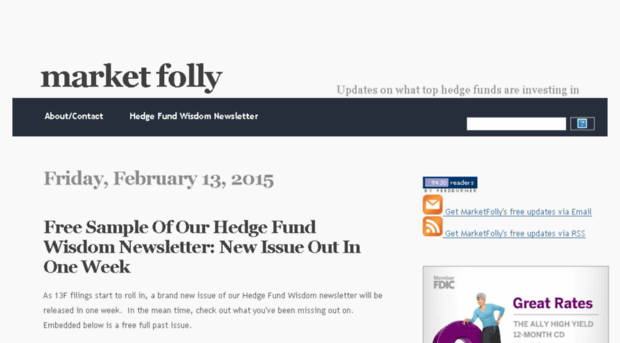HedgeFund Folly
Post on: 9 Июль, 2015 No Comment

Error.
Hedge-fund replication ought to be a straightforward way for mutual-fund investors to get a taste of hedge-fund returns. But the strategy is confusing and about as black-box as the strategies they’re trying to mimic.
These funds crunch a lot of data to determine and measure the biggest drivers of hedge-fund risks and returns — like market shocks, volatility, and liquidity — or so-called beta, and then identify the biggest contributors to outperformance (which can be asset classes such as emerging markets or currencies, or strategies such as merger arbitrage). Instead of worrying about specific security selection, they work on getting the right mix of these factors and then take long or short positions, usually through futures or exchange-traded funds.
But since the funds are essentially replications of constantly changing proprietary findings, trying to sort out how they fit in as a diversifier is difficult. They mostly have succeeded in doing what they said they would, but the challenge is in evaluating performance, says Scott Welch, chief investment officer of Fortigent, an investment consultancy.
This isn’t a standard index strategy. For starters, the data these funds are using are at least a couple weeks old. And unlike the very well-defined stock indexes, there isn’t yet an agreed-upon benchmark for these funds, says Petter Kolm, director of New York University’s Mathematics in Finance Master’s Program. Not surprisingly, that leads to some variation in returns. The Goldman Sachs Absolute Return Tracker returned just 1.1% over the three-year period ended in 2012, compared with the 2.6% posted by IQ Alpha Hedge Strategy and the 3.4% logged by Natixis ASG Global Alternatives Fund.
When analyzing a fund, we don’t typically want the benchmark to be a black box, says Josh Charney, an alternatives investment analyst at Morningstar. The difficulty in evaluating them is one reason we don’t have that much confidence in them.
AS THE INDUSTRY CONTINUES TO TINKER with strategies — Goldman, for example, changed the benchmark for its fund last year — Kolm thinks these funds could become more widely used. The thinking goes: As more money flows into alternatives, the excess returns of hedge funds (the alpha) diminishes. That leaves investors with beta, which is still valuable since it offers diversification from traditional assets, but perhaps not worthy of hedge funds’ fees. But for now, it’s difficult to make anything like an apples-to-apples comparison — even for those in the business of evaluating funds.
As advisors and investors increasingly look to alternatives, one-stop shopping is often a good first step. While hedge-fund replicators fit into this category, it’s worth remembering that there’s no free lunch in the industry, and nothing is as simple as it first appears.














